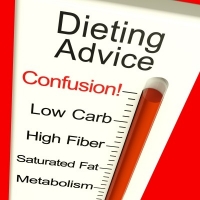New HIIT Research: A Practical Model For High Intensity Interval Training
High intensity interval training, also known as HIIT, has become immensely popular in the last decade. HIIT involves alternating brief bursts of very high intensity exercise (work intervals) with brief segments of lower intensity exercise (recovery intervals). One problem with some types of HIIT is that they call for such high intensity bursts - literally all out sprints - that they're not practical for everyone, and possibly not even safe for older or overweight individuals. A recent study out of McMaster University has tested a protocol for HIIT that produces impressive results in a short period of time without the need for "all-out" sprints…
Many of the previous studies on HIIT used ALL-OUT intervals on a specialized cycle ergometer, pedaling against a high resistance.
This type of training takes a high level of commitment and motivation and can result in feelings of severe discomfort and even nausea.
One of my colleagues mentioned in our Burn the Fat Forums that he remembers exercise physiology class in college where they did all out cycle ergometer interval sprint testing and nearly everyone either puked or passed out.
The Tabata protocol for example, is a brief but brutal 4 minute HIIT workout often spoken of by trainers and trainees alike with both appreciation and dread. It's no walk in the park.
The truth is, some HIIT protocols which have been tested in the lab to produce big improvements in cardiovascular function and conditioning in a short period of time, may not be practical or safe, especially for beginners, obese or older adults.
In this new study out of McMaster University, a HIIT protocol that was more practical and attainable for the general population was tested to see how the results would compare to the more "brutal" very short, but extremely intense types of HIIT.
Here's what the new HIIT protocol looked like:
Study duration: 2 weeksÂ
Frequency: 3 sessions per week (mon, wed, fri)
Work intervals: 60 seconds @ constant load
Intensity Work intervals: "high intensity cycling at a workload that corresponded to the peak power achieved at the end of the ramp VO2peak test (355 +/- 10W)"
Recovery intervals: 75 seconds
Intensity Recovery Intervals: Low intensity cycling at 30W"
Rounds: 8-12 intervals
Progression: 8 intervals 1st two workouts, 10 intervals second two workouts, 12 intervals last 2 workouts.
Warm up: 3 min:
Duration of work intervals: 8-12 minutes
Total time spent: 21-29 minutes.
Results: In just 2 weeks, there were significant improvements in functional exercise performance and skeletal muscle adaptations (mitochondrial biogenesis). Subjects did not report any dizziness, nausea, light headedness that is often reported with all-out intervals.
They concluded that HIIT does not have to be all-out to produce significant fitness improvements and yet the total weekly time investment could remain under 1 hour.
On a personal note, I REALLY like this kind of interval training: 60 second work intervals repeated 8-12 times. Here's why:
Body composition was not measured in this study, but I believe that enough energy expenditure can be achieved with 20-30 minutes of this style of interval training to make significant body comp improvements in addition to all the cardiovascular conditioning improvements.
That's another problem with super-brief and super intense HIIT programs: The cardio and heart benefits are amazing, but you can only burn so many calories per minute, no matter how intensely you work. To call a 4-minute workout a "good fat burner" in the absolute sense is ridiculous.
Somewhere in between long duration slow/moderate steady state cardio and super short super-intense HIIT lies a sweet spot for fat-burning benefits… a place where intensity X duration yield an optimal total calorie expenditure at a reasonable time investment. Perhaps this 20-30 minute HIIT workout is it?
If you've read any of my other articles on cardio, you'll know that I'm not against steady state cardio, walking or even light recreational exercise and miscellaneous activity as part of a fat loss program. All activity counts towards your total daily energy expenditure, and in fact, the little things often add up during the day more than you would imagine (just look up N.E.A.T. and see what you find).
But for your formal "cardio training" sessions, if you're going to use traditional cardio modes (stationary cycle, etc.) and if your goal includes fat burning, and if your time is limited, then this type of HIIT is a great choice and you can now say it is research proven…
Not to mention… the excuse, "I don't have enough time" has been officially busted!
Train hard and expect success!
Tom Venuto, author of
Burn The Fat Feed The Muscle
Burn The Fat
Founder & CEO ofÂ
Burn The Fat Inner Circle
Burn The Fat - Inner Circle
-
The Diet Of A Clown Fish
The history of diet plan dated from the moment that the first monkey e
-
Body Wraps And Waist Wraps: The Difference Between Losing Fat And Losing Inches
Body wraps have been around for ages in the weight loss and spa indust
-
Khloe Kardashian transformation
Everyone has their eyes on Khloe Kardashian and the media can be rough
-
Picking The Weight Loss Supplement That Suits You Best
If you have set your eyes on losing those extra kilos then it is best
-
Weight loss Basic behind treatment of Yoga
You are probably feeling a little skeptical whether or not,
-
Fat Burning Furnace - Can I Lose Weight Really Fast with this Method?
How to Lose 26 Pounds in 7 Weeks! If you want to lose weight really fa
- DON'T MISS
- The Diet Solution Program – Healthy Health Tips
- Fat Burning Furnace - Do You Know These Diet Myths?
- How to Lose Weight Tips: Doing Sports and Losing Weight-Best Sports For You
- Tacfit Commando Login - Tacfit Commando Review
- Everloss - Sick of Trying Junk Diets? Learn the Truth About Weight Loss Eating!
- The Right Method for Buying HCG Drops for Weight Loss
- The Every Other Day Diet Book
- Best Fat Loss Program? Find Out How Much Weight You Can Lose This Month When You Use This Proven Accelerated System! - Ever Loss
- The Diet Solution Basic Package
- Developing Mental Toughness For Permanent Weight Loss




